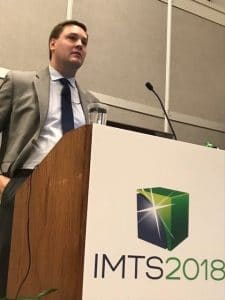Advances in additive manufacturing have allowed for improvements in industries ranging from energy and aerospace to medical and automotive among others. Getting to tell these unique and interesting stories is one aspect of what makes our work with clients like Optomec so rewarding.
Optomec’s customer, University of Nebraska-Lincoln (UNL), is a great and recent example. UNL’s groundbreaking work to develop dissolvable metal components for medical implants with Optomec’s LENS system has caught the attention of the trade media and promises to bring far-reaching benefits to patients and their families.
When it comes to surgery and orthopedic needs, we’ve come a long way with technology but there is still much to be improved upon. These treatments are often invasive, costly and sometimes require multiple surgeries. The critical problem with current orthopedic implants is that the pins, plates and screws are made with titanium, stainless steel, or cobalt alloys, which are permanent and often have a high complication rate because they are still (causing “stress shielding”) and require removal with a secondary surgery, which is costly and places undue suffering on patients. This is the issue the UNL team has been addressing and is hoping to alleviate through the diverse capabilities provided by hybrid additive manufacturing.
UNL is using a LENS Hybrid Controlled Atmosphere System from Optomec to develop dissolvable magnesium components that have the potential to dramatically alter the design and manufacture of next-generation medical implants. With Optomec’s LENS, UNL is applying a hybrid additive manufacturing process to control the disintegration of medical fasteners and plates so they stay intact long enough to serve their purpose and then degrade away once the bone is healed.

Wired Island created a PR campaign around this story to get attention for this important research and Optomec’s powerful capabilities. Timed around the IMTS trade show enabled us to connect in person with many potential customers and journalists.
The campaign garnered attention key, relevant trade outlets. More than 25 articles were written in September alone including: Digital Engineering and 3DPrint.com. Coverage continued to trickle in over the months in technology trade press and verticals in the medical field. The story has resonated so much that journalists have continued to show interest in what Optomec and additive manufacturing can do for the medical field nearly a year after the initial announcement as shown in Materials Today and Additive Manufacturing.
In today’s fast-paced and competitive news cycle, it’s not common for a story to stick around for so long. We’re proud of the on-going results this campaign has garnered and continues to generate. For more on getting the most out of your media relations campaigns, visit our page.




Copyright ©2025 | Wired Island PR. All Rights Reserved
Privacy Policy